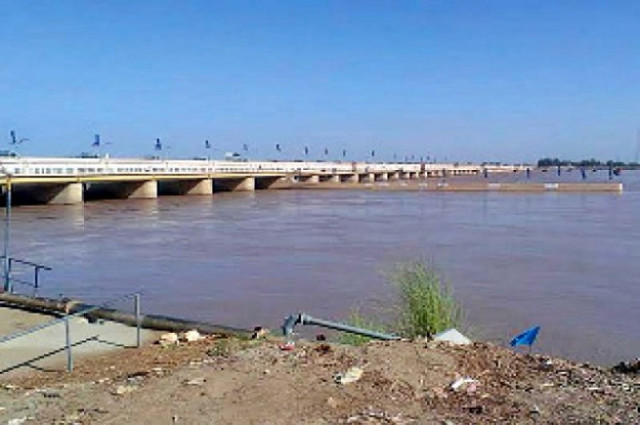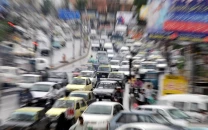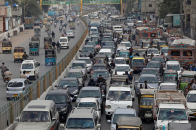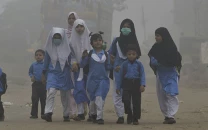Rising water levels put Sindh on flood watch
Guddu records a high flood, with inflow at 544,658 cusecs

River levels across Sindh remained high on Saturday, prompting authorities to stay on alert and continue flood-preparedness measures. The heightened vigilance comes after torrential monsoon rains unleashed widespread devastation in Punjab, inundating villages, damaging crops, and displacing thousands of people.
Massive flooding across Punjab's major rivers has left more than 4.5 million people affected, prompting what officials describe as the province's largest rescue and relief operation in history.
According to the Provincial Disaster Management Authority (PDMA), heavy flooding in the Ravi, Sutlej, and Chenab rivers has inundated over 4,700 villages. At least 101 people have died in flood-related incidents in Punjab, while nearly 2.5 million residents have been relocated. Authorities have also evacuated more than two million livestock.
Relief Commissioner Nabeel Javed said 392 relief camps, 493 medical camps, and 422 veterinary units are operating across the province. "We are working around the clock to ensure affected families receive shelter, food, and medical care," he told reporters.
On Saturday, the provincial rain and flood emergency monitoring cell reported elevated flows at key barrages. Guddu Barrage recorded a high flood, with inflow at 544,658 cusecs and outflow at 514,051 cusecs. Sukkur Barrage registered a medium flood with 470,580 cusecs inflow, while Kotri Barrage saw a low flood with 262,509 cusecs inflow. Panjnad recorded inflow and outflow at 575,195 cusecs.
Army and civil administration officers inspected vulnerable areas in Dadu, Jamshoro, Sukkur, and Guddu, where embankment strengthening and other preventive works are underway. Army-run medical camps are providing free treatment to residents and will remain active if flooding occurs.
Record water levels
The PDMA reported extremely high flood levels at key points. At Head Punjnad, water flow reached 575,000 cusecs, while levels at Head Muhammadwala rose to 410.5 feet against a danger mark of 417.5 feet. At Sher Shah Bridge, water peaked at 392.7 feet, close to the critical threshold of 393.5 feet. Officials expect flows at these sites to recede in the next 48 hours.
The Ravi at Head Sidhnai experienced medium-level flooding, while the Sutlej at Ganda Singh Wala and Sulaimanki remains at low flood levels. Rainfall has ceased in upper catchment areas, allowing rivers elsewhere to begin returning to normal.
On the Indus, the Guddu Barrage recorded high flood levels with a discharge of 561,000 cusecs, while Sukkur Barrage registered medium flooding with 472,000 cusecs. Kotri Barrage is experiencing low flood levels.
PDMA Director General Irfan Ali Kathia called the situation historic. "For the first time in Punjab's history, all major rivers witnessed flooding simultaneously," he said, adding that Ali Pur and Jalalpur Pirwala are no longer under immediate threat.
Kathia said more than 28 districts and thousands of settlements were inundated at the peak of flooding. "This is Punjab's largest rescue operation. Over 2.5 million people have been evacuated, and five helicopters have been operating continuously in Multan and Rahim Yar Khan regions for the past 72 hours," he said.
In an unprecedented move, he highlighted, Punjab has deployed airlift drones to deliver emergency supplies to hard-to-reach areas.




















COMMENTS
Comments are moderated and generally will be posted if they are on-topic and not abusive.
For more information, please see our Comments FAQ